
Tile Area
- Elevation Tiles
- Living Room Tiles
- Bedroom Tiles
- Load More

Tile Type
- Ceramic
- Glazed Vitrified Tiles

Tile Size
- 600x1200 mm
- 300x450 mm
- 300x600 mm
- Load More

Factory Production
- West Zone
- Sikandrabad

Color
- Grey
- Brown
- Beige
- Load More

Tile Collections
- Craft Cladding Collection
- Digital
- Eleganz 2.0
- Load More

Wall/Floor
- Walls

Tile Finish
- Matte Finish
- Glossy Finish
My Cart
There is no product in your Cart
Elevation Tiles
Elevation tiles are the ultimate choice for giving a stunning appearance to outdoor walls! These tiles are available in different designs and patterns and can be used on the exterior walls of both commercial and residential spaces. The price of elevation tile designs starts at around Rs 56 per sq. feet. and goes up to 67 per sq. feet. These modern front wall tile designs are available in sizes 300x450mm, 250x375mm, and 300x600mm. The glossy and matte finish are two of the finishes that accentuate the beauty of the tiles. EHM Bamboo Natural Wood Brown, EHM Bamboo Dual Wood Beige, EHM Stone Brick Cotto, EHM Stone Brick Beige, and EHM Stone Brick Brown are the most popular elevation tiles available at Orientbell Tiles. You can buy these tiles from a store near you or use a tile visualiser tool, TriaLook on the website.
Latest Front Elevation Tile Designs
The front elevation tile design of your house sets the tone for the entire aesthetic, creating a first impression that reflects your taste. With variants in materials and stylish options, choosing the perfect front tile design can transform your outdoor wall tile design into a captivating visual statement. Elevation tile design can do wonders to give a modern sleek look or one that is timeless and classy to enhance the space and add value to your home. Explore these Orientbell Tiles’ stylish and durable options to find the ultimate match for your outdoor wall tile design needs.
Elevation tiles are the ultimate choice for giving...
Items 1-25 of 212
Front Elevation Tile Sizes
When it comes to revamping your home's curb appeal, the size of your front elevation tiles plays a crucial role. The large elevation tiles bring out a grand and imposing look while the medium elevation tiles create just the right balance to give a refined look. The size you will choose can dramatically impact the overall appearance. Selecting the right size for your area ensures a design that will be visually aligned with your home's architecture. Whether you opt for bold, large tiles or subtle, medium ones, the perfect front elevation tiles can transform your exterior, making a striking statement and elevating your home's style. Below listed are the elevation tile sizes available at Orientbell Tiles.
|
Popular Elevation Tiles Size |
Size in MM |
|
Regular Elevation Tiles |
|
Elevation Tiles Prices
When planning the cost of enhancing your home's exterior, it's crucial to consider the outdoor wall tile prices. Assessing front wall tile price involves assessing the cost per square foot, depending on the area you're covering, the specific thickness required and the rate per tile. All these attributes should be given due importance to strike a balance between the quality and affordability of your exterior wall-tiling projects. The front wall tile price signifies not only the initial cost of purchase but serves as an investment over time for both durability and aesthetic appeal. Provided below is a table of the elevation tile price range offered by Orientbell Tiles.
|
Tile Type |
Minimum Price |
Maximum Price |
|
Elevation Tiles |
Rs 41 per sq. feet |
Rs 69 per sq. feet |
Types of Elevation Tiles
At Orientbell Tiles, we offer vast categories of elevation tiles designed to enhance the aesthetics and durability of exterior walls. The major variants of elevation tiles are:
- Ceramic Elevation Tiles: Ceramic tiles are very popular as they have aesthetic and robust features. They are available in different sizes, colours and surface finishes, which enables them to fit into various elaborate designs that harmonise with different kinds of architecture. They are functional in withstanding weather conditions and resist scratches. Examples include designs like EHM Strip Natural Wood, EHG Stacked Stone Multi, and EHM Linear Autumn Leaf Grey. The tiles for the front elevation that are made of ceramics are easy to clean.
- Glazed Vitrified Elevation Tiles: GVTs are stronger and known for being extremely resistant to stains and scratches compared to ceramic tiles. They have a glazed surface which has been produced using digital technology that gives these tiles a remarkable beauty while keeping in mind their durability. Examples include designs like Craft clad Mosaic 4 x 8 Grey, Craft clad Strips Brown, and Craft clad Brick Red. Mostly come in a matte finish, these tiles are available in a wide range of designs and colours, ideal for creating visually striking elevation facades.
Both glazed vitrified and ceramic tiles offer excellent durability and are a beautiful option for outdoor wall applications. From the traditional beauty of ceramic to the modern class of glazed vitrified, Orientbell Tiles presents a range that befits the range of different design moods and architectural needs.
How to Choose the Best Elevation Tile
Selection of the right tiles for the front elevation requires consideration of various elements so that they not only look good but also fulfil other practical functions.
1. Measure the Area:
- You have to first determine and measure the area of the front elevation that is to be tiled. It aids in estimating the number of tiles that will be required, hence preventing shortage or excess purchase, which affects budgeting.
2. Budgeting:
- Plan out a budget for your project, including the cost of tiles, installation, and any additional costs. Be clear on your plan so that you can go for the options within the budget.
3. Assess Durability and Maintenance Needs:
- Assess the kind of environmental conditions your front elevation will be exposed to like direct sunlight, heavy rainfall, etc. Choose sturdy and weather-resistant tiles for the front elevation to maintain their appearance over time.
- Get an overview of the maintenance needed while picking the tiles for the front elevation. Opt for a plain surface that can resist grime and dirt, ensuring that your home's exterior remains vibrant and attractive with minimal upkeep.
4. Design Considerations:
- Plan out your look on the front elevation. Larger elevation tiles have a seamless and modern look, while the smaller tiles allow for detailed patterns and textures that can give a sense of character.
- Make sure the colour, texture, and finish of the tile are in perfect harmony with your home's style and setting. It will make sure that the tiles for the front elevation complement the overall external design of your house.
5. Material Choice:
- Material has a major say on the functional durability and the aesthetic appeal of a home design. Ceramic tiles are available in a spectrum of colours and finishes. Known to be resistant to wear and scratches they can adapt to various weather conditions.
- Other options include the glazed vitrified tiles that have a protective layer that adds to their strength and forms a shield against stains, scratches and diverse weather. They come in a lot of design options, which are suitable for a modern and sleek ambience.
Choosing the best tiles for front elevation involves a proper balance between your aesthetics and practical considerations regarding durability, maintenance needs, and budget. By following these steps, you will have an elevation front that will increase curb appeal and last for years with minimal maintenance.
Modern Elevation Tile Design Images
We, at Orientbell Tiles, are dedicated to enhancing your building’s facade or creating attractive accent walls with elegance and style. Explore our wide range of stylish and modern elevation tile designs. Browse through the following accent wall or house front tiles design pictures for inspiration to infuse these decorative tiles into your environment!
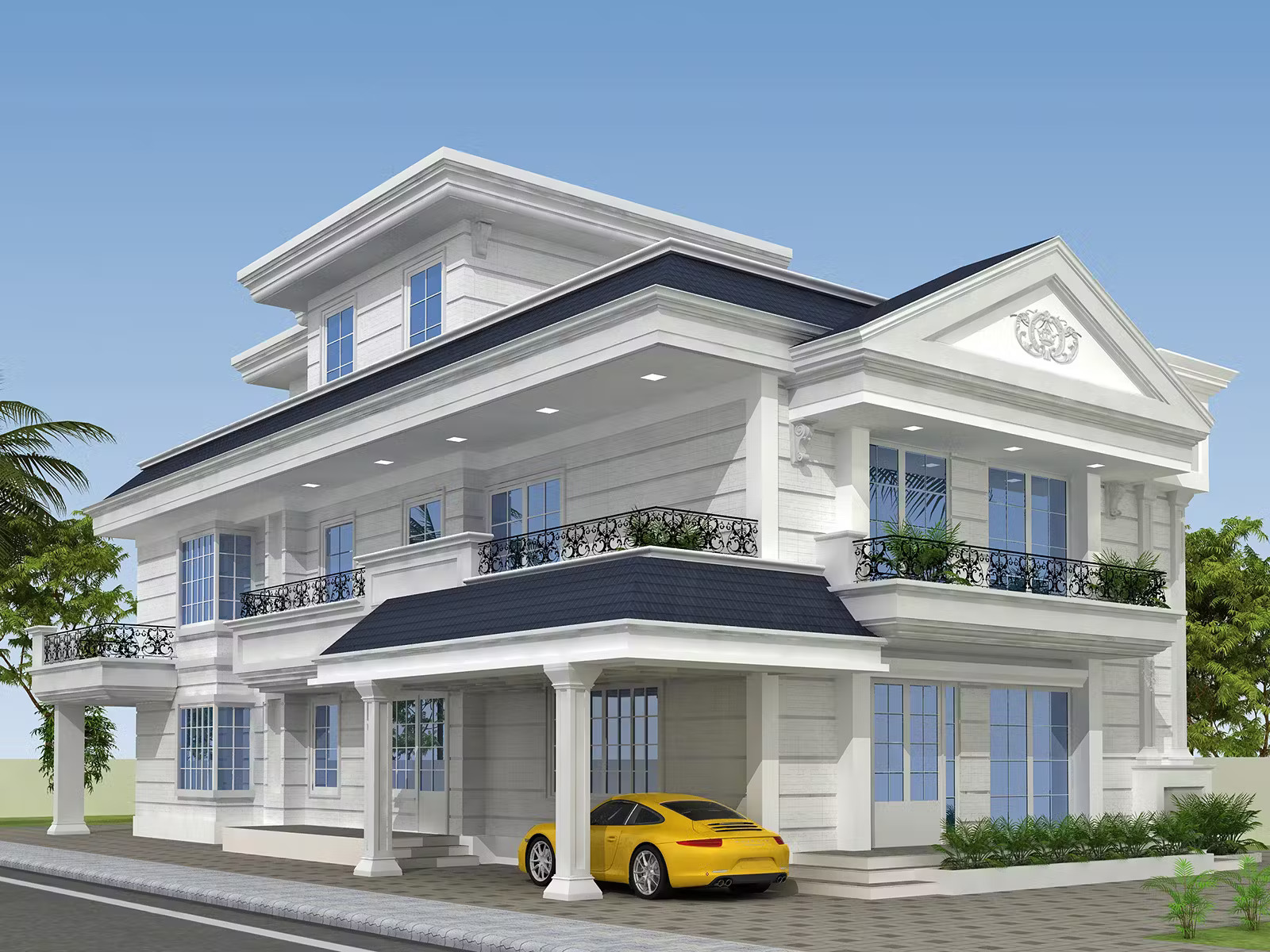
Combine our EHM Cliffstone White to elevate your home’s front wall with its elegant, timeless white shade, adding a classy, sophisticated touch. Made from durable ceramic, this tile ensures long-lasting beauty and strength. Its special surface makes cleaning easy, overcoming the common misconception that white tiles are hard to maintain.
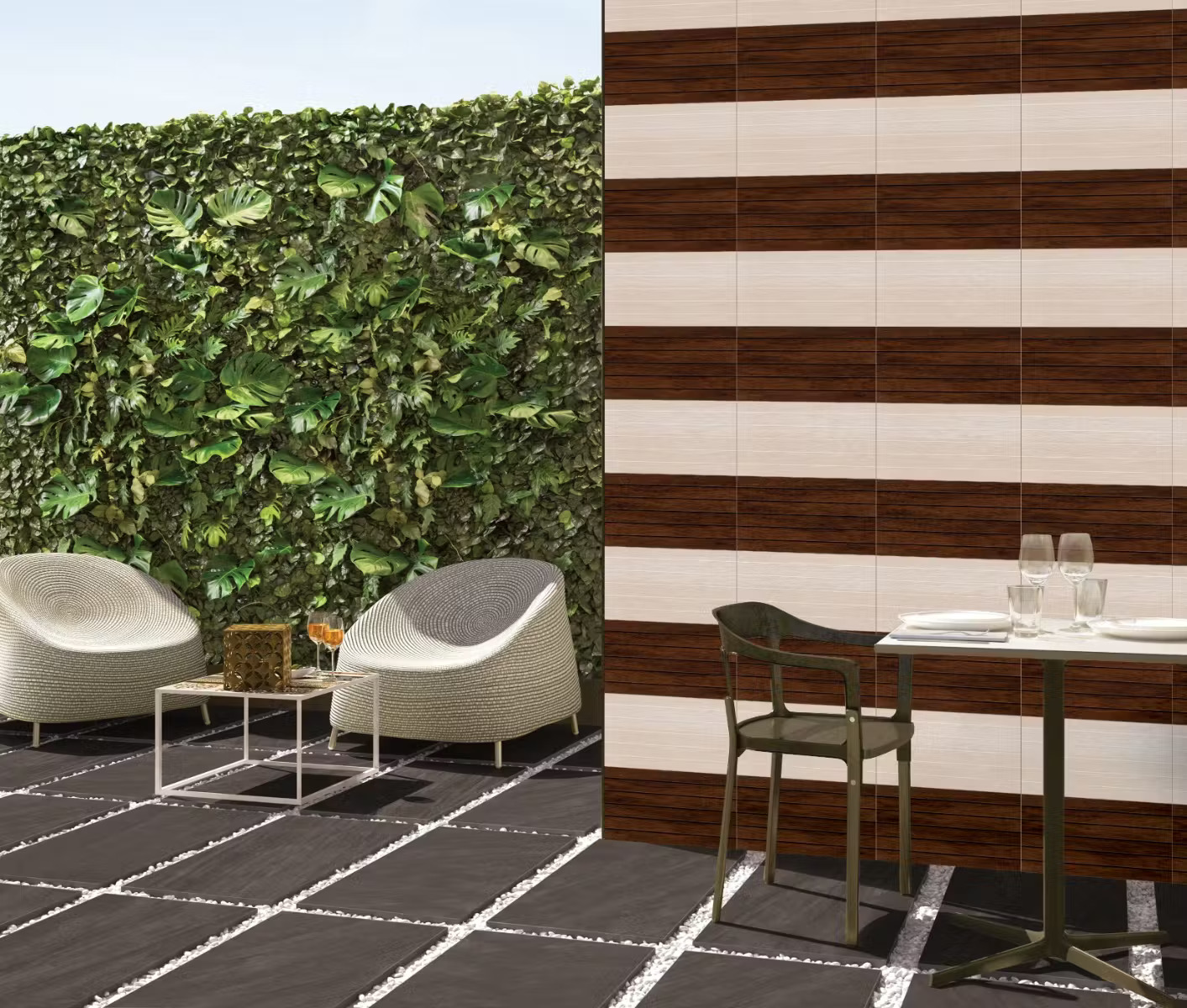
Incorporate our OEM Grove Brown tile to create a striking accent wall in your restaurant, offering a rich, earthy tone that complements any decor. The dark brown hue adds depth and sophistication, making a memorable first impression. Easy to maintain and long-lasting, these tiles enhance your space with minimal effort.
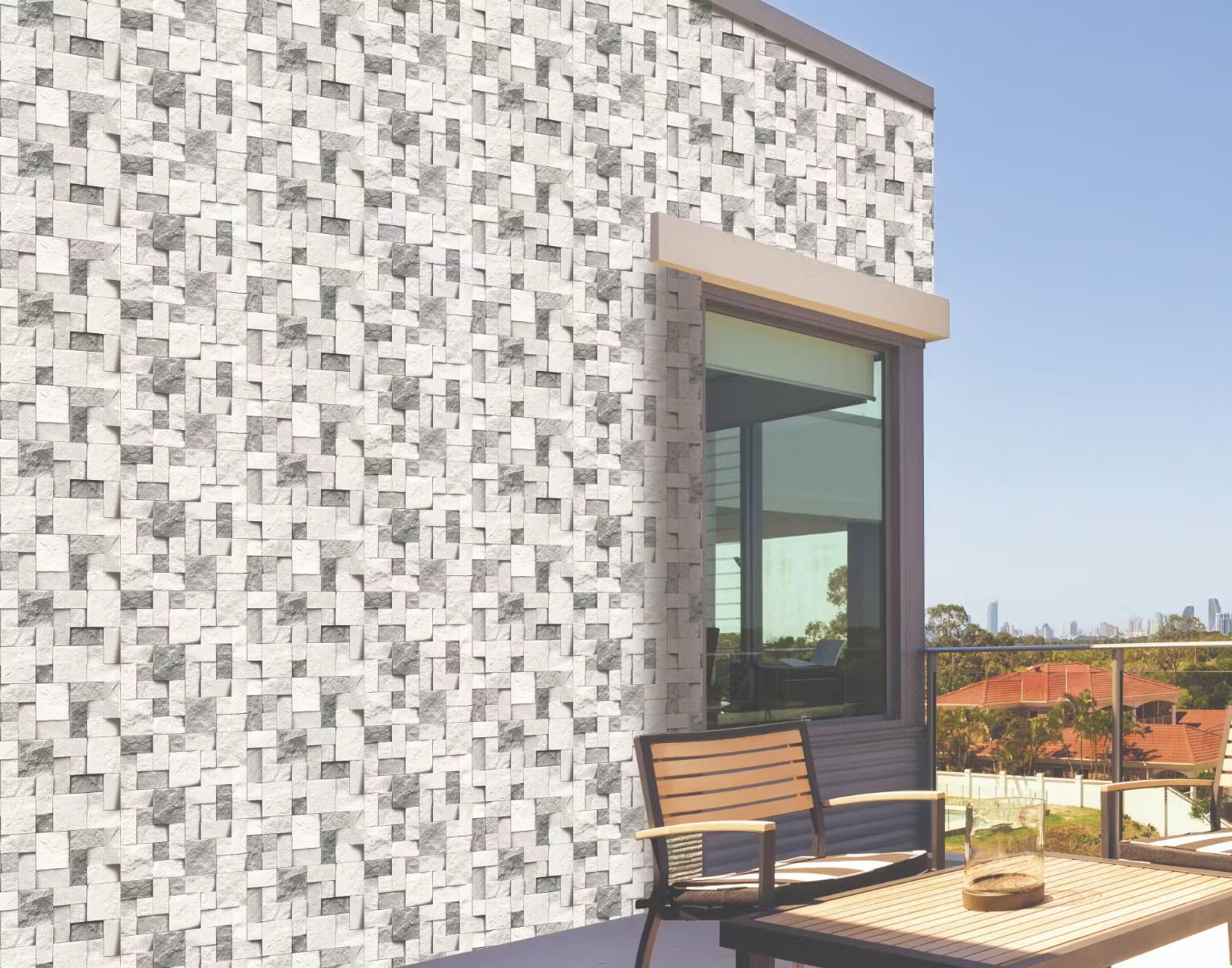
Install our Craftclad Stone Square Grey LT on your terrace or balcony wall to elevate the overall exterior of your home. This tile has a sleek, light grey stone square pattern with a matte finish that adds sophistication while the small 300x600 mm size offers design flexibility. Ideal for modern outdoor spaces, it complements bold accents, creating a clean, contemporary look.
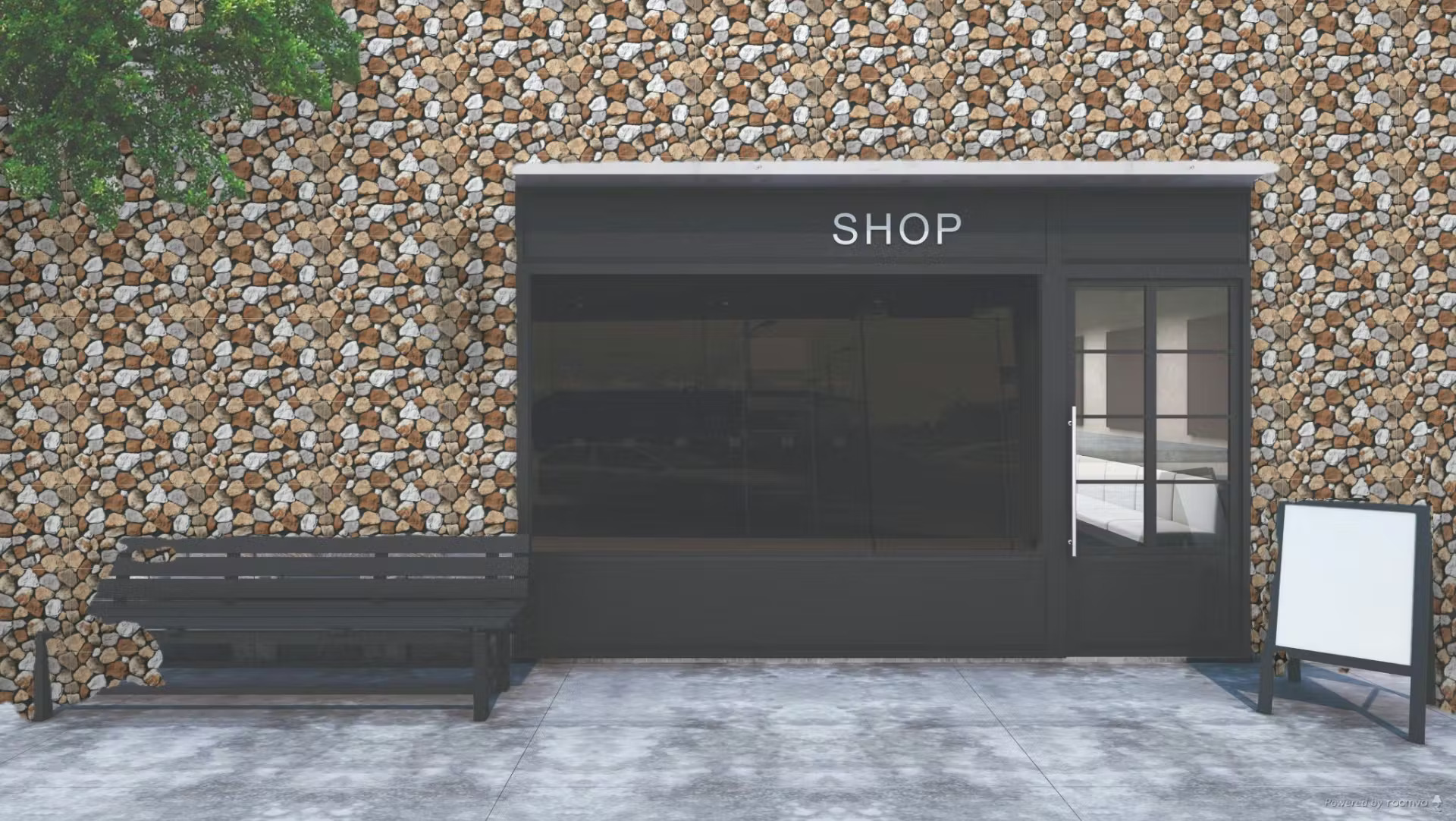
Incorporate our EHM Riverrock Beige Multi into your restaurant or shop's front wall for a distinctive appearance with its stunning river-rock design, bringing nature’s beauty to your space. The multi-coloured pattern adds visual interest and a classy touch. Durable, easy to maintain, and resistant to stains and scratches, this tile ensures a lasting, captivating impression on customers.
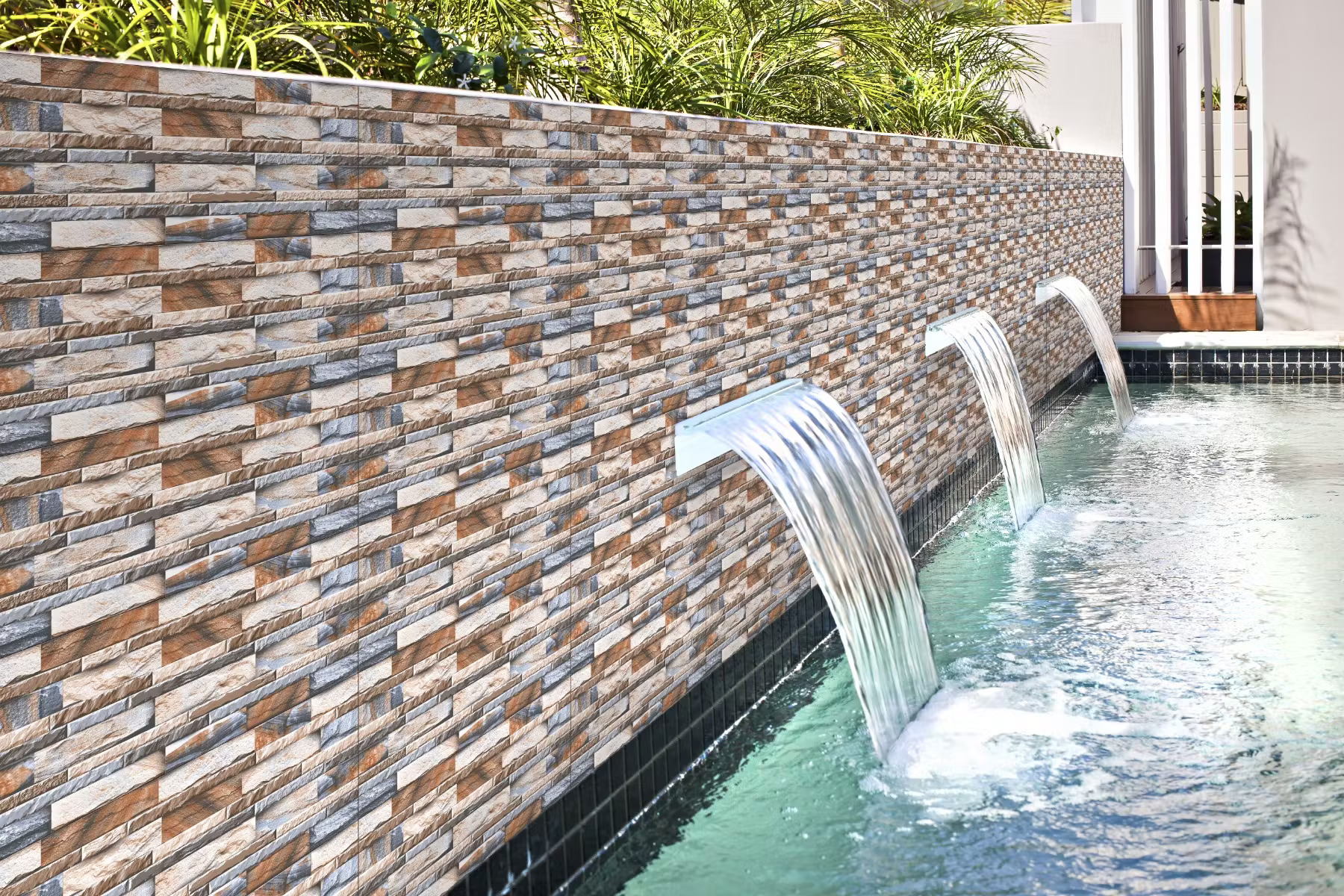
Opt for our EHM Ledgestone Multi to enhance the wall next to your pool or fountain with its striking multi-coloured stone design. The matte finish adds sophistication and boldness, creating a visually captivating backdrop. Durable and resistant to water, stains, and scratches, it maintains its charm and withstands outdoor elements effortlessly.
3D Elevation Tiles Design for Modern Home Exteriors
Looking to make your exterior home stand out at first glance? 3D elevation tiles might be the solution. The tiles create a sense of depth and texture on the walls, creating a dramatic, layered appearance that instantaneously adds character. From the look of natural stone to weathered brick or modern designs, there's a 3D elevation tiles design for everyone. These tiles are aesthetically pleasing, durable, weatherproof, and low-maintenance, making them ideal for outdoor applications. Add architectural charm to your home's architecture with designs that offer visual depth and drama. Discover a vast range of 3D elevation tiles to transform plain walls into stunning features that stop traffic.
Check Out this Video to learn more about our Elevation Tiles Collection
FAQs
- 1. What types of finishes are used in elevation tiles?
- Elevation tiles come with glossy and matte finishes. The glossy finish is popular for the elegant sheen it provides to the tile surface. On the other hand, the matte finish gives a subtle and more natural touch to the tile design. Both finishes are unique in their own ways and add value to the tiles. You can choose the finish that intuitively appeals to you.
- 2. What are the sizes available in elevation tiles?
- These high-depth punch tiles are available in two regular sizes: 300x600mm and 300x450mm. These elevation tiles can be used in commercial as well as residential areas. The sizes in which exterior tiles are available make them suitable for use on indoor walls as well.
- 3. Where can we install elevation tiles?
-
Although elevation tiles are popular for their usage on exterior walls, these tiles can be installed in indoor areas as well. You can use these tiles on accent walls, feature walls, staircases, lobby areas, living room walls or kitchen backsplashes. Most importantly, these tiles absorb very less water and can withstand harsh climatic conditions too.
On higher floors you must insist that the right adhesive is used for installation. This ensures a much higher safety. Feel free to reach out to us for expert assistance.
-
- 4. What are the properties of exterior elevation tiles?
- Exterior tiles or elevation tiles are easy to clean. The wider grooves on these tiles make the cleaning easier. Also, these tiles are baked in a kiln in temperatures over 10000C, and hence have a low water absorption rate - which makes them less affected by rain and dew. Therefore, these tiles can be used on the house elevation without any worries of damage from the elements.
- 5. Can we clean elevation tiles easily?
- Elevation tiles come in a finish that makes it very easy to clean. The wider grooves on these tiles make the cleaning easier. One sweep with a wet cloth and it will look as good as new. So definitely, elevation tiles are easy to clean and maintain.
- 6. Which size is the best?
- Seen from a distance, elevation tiles are such that their size does not matter. Hence, you can take a call on which size tiles are best. The most popular size that is easy to install is the 300 X 450mm tiles. However if you have a large area then you can choose to go for larger tiles.
- 7. Can we use elevation tiles in our living room?
- Absolutely! Elevation tiles can be used for both your indoors and outdoors. The 300 X 450mm tiles come in various designs and colours that are versatile for your indoor spaces.
- 8. What size of tiles should we use on the external pillars?
- Our 300 X 450mm elevation tiles cover the standard pillar tile wall. One tile covers the width of a standard pillar in the buildings so this size is perfect for your external pillars.
- 9. What type tile strongest?
- a. Which tiles last the longest?
Tiles made of materials such as porcelain, ceramic, natural stone (like granite or marble), or glass tend to last the longest. These materials are durable and resistant to wear and tear, which makes them ideal for high-traffic areas such as floors or walls. Additionally, tiles that are properly installed and maintained can last for decades or even longer.
- b. Does porcelain tile crack easily?
Porcelain tiles, known for their durability and resistance to cracking, makes them a popular choice for flooring, walls, and other surfaces. While it's still possible for porcelain tiles to crack under certain circumstances, they are generally considered to be a highly durable and long-lasting option. Proper installation and maintenance can also help prevent cracking and prolong the life of porcelain tiles.
- c. Which brand tile best?
Some of the top tile brands include Orientbell Tiles, Kajaria, Nitco, Somany Ceramics among others. Ultimately, the best tile brand for you will depend on your specific needs and preferences, as well as your budget. It's important to do your research, read reviews, and compare prices to find the tile brand that best suits your needs.
- d. Which is better-tiles or concrete floor?
Concrete is strong, resilient, and when cleaned, can have a seamless, shiny surface. However, it is prone to moisture and if water gets suspended beneath the surface, it may eventually grow mould and mildew. Conversely, tile surfaces are more easily cleaned than concrete and are just as strong and long-lasting. Tiles are also waterproof, whereas concrete can be stained from spills if it isn't cleared up right away. Also, tiles are much more affordable than concrete floors.
- e. Which is the better porcelain tile?
It is difficult to choose a particular porcelain tile because it relies on a number of variables, including the intended use, the location, and personal taste. However, porcelain tiles have some general benefits over ceramic tiles, such as increased durability, density, and reduced water absorption. To choose the best kind of tile for one’s work, it is advised that you consult about your requirements with a tile expert or contractor.
- f. What tile is most waterproof?
Porcelain tiles are more waterproof compared to other types of tiles because they are renowned for having a low water absorption rate. Porcelain tiles have a water uptake rate of 0.5 percent or less, according to ASTM C373 standards developed by the American Society for Testing and Materials. Porcelain tiles are therefore perfect for moist areas such as bathrooms and kitchens.
- a. Which tiles last the longest?
- 10. Which Tile Is Best For Waterproofing?
- a. What kind of tile lasts the longest?
Some of the most popular tiles that are durable and last-longer include porcelain tiles, concrete tiles, slate tiles, and clay tiles. It is crucial to remember that a tile's lifespan is largely influenced by variables like upkeep, installation, and usage. To select the best kind of tile for your unique needs and be sure that it is installed correctly to maximise its lifespan, it is advised that you speak with a professional.
- b. Which tile is scratch resistant?
The most scratch-resistant types of tiles are commonly considered to be ceramic and porcelain. These tiles are manufactured from hard, durable clay which has been heated, making them impervious to cracks and scratches from foot traffic. Porcelain tiles are also known for being dense, which increases their resistance to cracks and damage.
- c. Which tiles absorb water?
Porous tiles, such as ceramic, terracotta, and natural stone tiles, have the ability to absorb water to varying degrees. Non-porous tiles, such as glazed ceramic and porcelain tiles, do not absorb water.
- d. What kind tile not slippery when wet?
When wet, Ceramic and Porcelain tiles with a textured surface are commonly considered to be less slippery than smooth, glossy tiles. Furthermore, tiles with a matte or polished surface might offer more traction than tiles with a glossy finish. Additionally, it is possible to find tiles made especially to be non-slip, which can offer even more resistance in wet areas.
- e. Can tiles prevent water leakage?
Yes, tiles can prevent water leakage if they are installed correctly and with the proper materials. Waterproofing layers and sealants should be used to ensure that the tiles do not allow water to pass through to the underlying surface. However, it is important to note that tiles alone may not be enough to completely prevent water leakage in all cases, as other factors such as the condition of the underlying surface and the quality of the installation can also play a role.
- f. What are the disadvantages of tiles?
Tiles can have several disadvantages depending on the context of their use. For example, glossy tiles can be slippery when wet, increasing the risk of falls and accidents. Additionally, grout lines can become discoloured and dirty over time, requiring frequent cleaning and maintenance. Tiles can also crack or chip, which can be costly and difficult to repair, particularly if the tiles are installed on a large area. Finally, tiles can be relatively expensive, especially if they are made from high-quality materials or if they require professional installation.
- g. Which tile is better matte or glossy?
Matte tiles have a non-glossy finish, they usually offer greater slip resistance for floor areas. Additionally, they typically hide stains and scuffs better than glossy surfaces. Glossy tiles, on the other hand, have a reflective surface that reflects light, thus making them ideal for walls and accent spaces. They usually require less cleaning effort than matte tiles because of their smooth surface. Ultimately, a person's personal taste and the tile's intended use will determine whether to use glossy or matte tiles.
- a. What kind of tile lasts the longest?
- 11. Which Tiles Are Not Slippery?
- a. Which tile material is most durable?
The most durable tile materials are ceramic, porcelain, and natural stone. Ceramic and porcelain tiles are made from clay fired at high temperatures, making them highly resistant to scratches, chips, and cracks. They are also waterproof, which makes them ideal for bathrooms and kitchens. Natural stone, such as granite, marble, and slate, are highly durable and can last a lifetime with proper maintenance.
- b. What is the easiest tile to maintain?
Polished ceramic and porcelain tiles are among the easiest tiles to maintain and clean. They are impervious to stains and dampness because they have a smooth texture and are less porous. Also, larger tiles with minimal grout lines are suggested as they are simpler to clean and maintain. Vinyl tiles, glass tiles, and polished natural stone tiles are also considered to be simple to maintain and clean.
- c. What are slip-resistance tiles?
Slip-resistant tiles are made to offer better traction and lower the chance of sliding and falling, especially in wet and humid areas like kitchens and bathrooms. Their higher friction coefficients and frequently textured surfaces help to improve their slip resistance. The slip rating of these tiles usually indicates how resistant they are to slipping.
- d. What type of tile stays coolest?
There are several types of tiles that are known to stay cooler than others. Ceramic tiles, particularly those that are light in colour, tend to be more reflective and absorb less heat from the sun. Porcelain tiles are also known for their coolness and durability, making them a popular choice for outdoor areas. Natural stone tiles, such as marble and granite, can provide a cool surface but may require more maintenance and upkeep.
- e. How do make my tiles not slippery?
You can add grip with non-slip coverings or rugs, use an anti-slip solution, place grab bars, keep the floor dry and clean, or think about re-tiling with slip-resistant tiles to make your tiles less slippery.
- f. Why are my tiles suddenly slippery?
Tile floors may suddenly become slippery for a number of reasons, including moisture, grease, dust, or soap residue left on the tiles' surface. Sometimes the texture or state of the ceramic surface itself can make it slippery. Regular and thorough cleaning can help avoid slickness, and adding a grip or installing non-slip mats, grip bars, or tiles can also be good options.
- g. What is the best tile for the floor?
Porcelain tile, glazed ceramic tile, and concrete tile are some of the most well-liked and long-lasting choices for floor tiles. These tiles are renowned for their sturdiness and water resistance, making them perfect for areas with a lot of foot activity or are prone to moisture. Additionally, porcelain and ceramic tiles, made of clay, are simple to clean and keep. However, in the end, personal tastes and requirements would determine the ideal floor tile.
- h. What tile looks the cleanest?
It is difficult to determine which tile looks the cleanest as it depends on various factors such as the colour of the tile, the material it is made of, the lighting in the room, and how well it has been cleaned. However, generally, tiles with a lighter colour and a smooth surface tend to show dirt and stains more clearly, making it easier to spot any areas that need cleaning.
- i. What kind of flooring is best for the elderly?
Porcelain or ceramic tile flooring with a textured or non-slip finish is best for the elderly, as it provides better traction and reduces the risk of slipping and falling. Additionally, larger tiles with minimal grout lines are easier to clean and maintain, making them more suitable for elderly individuals who may have difficulty with cleaning and upkeep.
- a. Which tile material is most durable?
- 12. Which Tiles Do Not Absorb Water?
- a. Can water leak through tiles?
Yes, water can leak through tiles, especially if there are cracks or gaps between the tiles or if the grout is damaged. Even though ceramic or porcelain tile is water-resistant, water can seep through the grout, damage the underlying structure, or cause mould growth. It is essential to properly maintain the grout and repair any damaged areas to prevent water leaks. If leaks are left unaddressed, they can also cause damage to walls, ceilings or floors.
- b. Which type of tile is best for high moisture and high traffic areas?
Porcelain tile is generally considered to be the best type of tile for high moisture and high-traffic areas. It is highly durable, water-resistant, and can withstand heavy foot traffic without wearing down quickly. Additionally, porcelain tile is available in a variety of finishes and styles, making it easy to find an option that suits your design preferences.
- c. What happens if water gets under your tiles?
Water under tiles can lead to a number of problems, including mould development, subfloor damage, and the mortar holding the tiles firmly in place becoming loose or deteriorated. Additionally, too much moisture can make the tiles rise off the floor or turn them discoloured or stained. It's crucial to choose a tile that is water-resistant and suitable for locations with high moisture levels, like ceramic or luxury vinyl tile, to avoid these problems.
- d. What is a water-resistant tile?
A water-resistant tile is a type of tile that has been designed to resist water penetration and is typically used in areas where water exposure is common, such as bathrooms, kitchens, and outdoor areas. Water-resistant tiles are usually made from materials that are non-porous and have a low absorption rate, such as porcelain or ceramic, which makes them resistant to water damage and staining.
- e. Do cement tiles absorb water?
Cement tiles' capacity to absorb water varies based on their specific type and production process. However, compared to cement tiles, other kinds of tiles such as porcelain and ceramic tiles are generally dense and have less water absorption. According to some sources, concrete tiles can absorb water at a rate of roughly 13%, though this can differ.
- f. Which tile is more waterproof?
Porcelain tile is generally more waterproof. This is because porcelain is denser and less porous, making it less likely to absorb water and more resistant to stains and damage from moisture. However, it's important to note that even porcelain tile can become damaged by excessive moisture or water exposure, so it's still important to take proper precautions and care when using it in areas prone to water, such as bathrooms and kitchens.
- g. What are waterproof tiles?
Waterproof tiles are a particular kind of tile that is used to avoid water damage and the development of mould. They are frequently used in moist environments like restrooms, kitchens, or other high-moisture spaces. Compared to regular ceramic tiles, waterproof tiles are usually made of materials which are less porous and retain less water.
- h. How can it be waterproof without removing the tile?
There are several methods for producing waterproofing over pre-existing tiles, including the use of adhesive PVC tiles and the application of a waterproof membrane. To avoid water damage, these choices might not offer a completely waterproof solution and might need to be installed properly. Before trying to waterproof over already-installed tiles, it is crucial to seek advice from an expert and take into account the unique circumstances.
- a. Can water leak through tiles?
- 13. Which Material Is Best For Front Elevation?
- a. What is the cost of the front elevation design?
The cost of front elevation design can vary depending on a number of factors such as the complexity of the design, the size of the building, the materials used, and the location of the project. Therefore, it is difficult to provide a short answer without more information. A front elevation design typically ranges from 30 to 80 thousand rupees. It is best to consult with a professional designer or architect to get an accurate estimate for your specific project.
- b. How do architects design elevation?
Using CAD software or more conventional pen-and-paper techniques, architects create elevations, which are drawings of a building's façade. The aesthetic style, planned purpose, and context of the building are all taken into consideration in the elevation design. They might also apply design principles to produce a sense of cohesion and harmony.
- c. What is the designer's elevation?
Designers typically design the elevation style by considering various factors such as the project's purpose, the client's preferences, building materials, and local building codes. They may use sketches, computer-aided design (CAD) software, or physical models to visualise and refine the elevation style. The final design will aim to achieve an aesthetically pleasing and functional building facade that reflects the desired style, incorporates key design elements, and complements the surrounding environment.
- d. How do you make an excellent elevation?
When creating an excellent elevation drawing, an architect must consider elements like the general architectural style of the building, the structure's intended use, and the nearby area. The elevation may include components like cast reflections to give the image a sense of depth and should use design concepts to bring together a feeling of unity and harmony. Line continuity and meticulousness are also crucial. The sketch should be made using either CAD software or the more conventional pen-and-paper techniques.
- e. What is the cost of elevation style?
The cost of designing an elevation style can vary greatly depending on various factors such as the complexity of the design, the size of the project, the expertise of the designer, and the region where the project is being executed. Generally, the cost of hiring a professional designer to create an elevation style for a residential or commercial property can range from a few thousand to tens of thousands.
- a. What is the cost of the front elevation design?
- 14. What thickness is best?
- a. Are bigger or smaller tiles better?
It depends on the specific application and the desired aesthetic. Smaller tiles are often better for intricate designs and can provide a more detailed look, while larger tiles can create a more streamlined and contemporary appearance. Larger tiles may also be easier and quicker to install since they cover more area with fewer individual pieces.
- b. What is a good size for a tile?
The space you're tiling and the aesthetic you want to achieve will determine the best tile size. A space can look bigger with larger tiles that are at least 12 to 18 inches wide or long, while corners or spaces with complex patterns may benefit from smaller tiles. Depending on the purpose and aesthetic of the space, tile sizes can vary from 2 inches to 18 inches for specific areas like kitchen countertops or living room floors.
- c. How can you tell suitable tiles?
Suitable tiles can be determined based on factors such as the intended use, the size and shape of the area to be tiled, the desired style or aesthetic, and the durability and maintenance requirements of the tiles. It is important to consider these factors before selecting tiles to ensure they are suitable for the intended application.
- d. What do you look for when buying tiles?
When buying tiles, there are a number of things to consider, including the size and shape of the tiles, the material they're made from, the colour and design, the durability and resistance to wear and tear, as well as the price and installation requirements. Additionally, you may also consider the tile's suitability for the intended use, such as for walls or floors, and whether it complements the existing decor and style of the space.
- e. Is thicker or thinner tile better?
The thickness of a tile depends on its intended use and the specific needs of the project. Thicker tiles are generally more durable and can withstand heavier traffic and wear, making them ideal for high-traffic areas such as commercial spaces and outdoor areas. Thinner tiles, on the other hand, are lighter and easier to install, making them a good choice for walls and other vertical surfaces. Ultimately, the decision on whether to use a thicker or thinner tile should be based on the specific requirements of the project and the desired aesthetic outcome.
- a. Are bigger or smaller tiles better?
- 15. Which Tile Is Slippery?
- a. Are glossy tiles slippery?
Yes, glossy tiles can be slippery, particularly when wet. The tile's shiny, smooth surface can make slipping and falling more likely, especially in wet environments like bathrooms and kitchens. When choosing tiles for space, safety must be taken into account even though they can be an appealing idea.
- b. What colour tile shows less dirt?
Darker-coloured tiles tend to conceal dirt more easily compared to lighter-coloured ones. However, compared to matte finish tiles, glossy finish tiles typically reveal less dirt. So you might think about a darker-coloured glossy finish tile if you want a tile that hides grime better. The location and planned use of the tile will ultimately determine the best tile colour to conceal dirt.
- c. Which tile is water resistant?
Tiles made of materials such as ceramic, porcelain, and natural stone are typically water-resistant. These tiles have a low porosity, which means that they are less likely to absorb water and become damaged over time. Additionally, the surface of these tiles is usually glazed or sealed, which provides an extra layer of protection against water damage.
- d. Which floor don't tiles show dirt?
In contrast to lighter-coloured tiles with seamless, glossy finishes, matte-finish tiles with complex designs and darker colours typically tend to reveal less dirt. For maximum usefulness and durability, it's critical to select the right tile based on the location and intended use.
- a. Are glossy tiles slippery?
- 16. What Kind Of Tile Is Trending?
- a. What tile trend in 2022?
Some of the most popular tile trends for 2022 are jewel-toned hues, ribbons and slats patterns, bamboo-look tiles, Japandi style tiles, black and white patterned floors, Zellige tiles, two-tone or checker floor tiles, triangular green tiles, grid-like tiles with distinct grout, and the smallest and daintiest floor tiles in bathrooms.
- b. Which tile colour is best?
The best tile colour may vary depending on the space and the individual. While cool tones such as blue and green are ideal for bathrooms, light pastel colours are typically a good choice for living areas and kitchens. Additionally, floor pavers should be painted in timeless neutral colours. The best tile colour selection will ultimately be one that satisfies your individual requirements and preferences while also enhancing the space's aesthetic.
- c. What is the most popular tile colour?
It can vary greatly depending on personal style, cultural trends, and the specific application of the tile. However, neutral colours such as white, beige, grey, and black are often popular choices for tile as they can provide a timeless and versatile look that complements a variety of design schemes. Additionally, shades of blue and green are popular choices for bathroom tiles, while earthy tones like brown and terracotta can provide a warm and natural feel in kitchens and outdoor spaces.
- d. What are the types of tiles?
There are many different kinds of tiles available, including clay, porcelain, glass, marble, granite, onyx, slate, travertine, and mosaic tiles. There are also cement, mosaic, terracotta, and quarry tiles. Style, durability, and the area of application are just a few of the variables that determine which tile type is best for a given job.
- e. What is the best tile shape?
The best tile shape will vary depending on the area in question and individual taste. The most common choices are generally square and rectangular tiles. Installing rectangular tiles parallel to the walls can give the impression that a room is longer in one way. Larger tiles are preferable for floors in the kitchen, living room, and dining room while smaller tiles are great for bathroom floors.
- f. Which tile brand is best?
There are numerous tile brands available each with special qualities and products. Orientbell Tiles, Arizona Tile, Kajaria Pottery, Ann Sacks, and Porcelanosa are a few well-known tile brands. Although, the best tile brand eventually relies on personal preferences for style, price range, and tile characteristics.
- a. What tile trend in 2022?
- 17. Do Bigger Tiles Look Better?
- a. What is the most popular tile size?
Some popular tile sizes include 12x12 inches, 18x18 inches, and 24x24 inches for floor tiles, and 3x6 inches and 4x4 inches for wall tiles. Larger tiles have become increasingly popular in recent years, as they can make a space feel more open and modern. Ultimately, the choice of tile size depends on personal preference, design goals, and the area being tiled.
- b. Is it cheaper to install large tiles?
Since fewer large-format tiles are needed to cover a given area and there are fewer grout lines, large-format tiles are comparatively less expensive and easy to install compared to regular-sized tiles. However, additional work might be necessary to guarantee a level surface for high-quality tile installation.
- c. What colour tile makes the room look bigger?
Lighter-coloured wall and floor tile colours reflect light, visibly expanding a room and giving the impression that the space is larger. White, ivory, beige, or grey are some suggested light-coloured tile colours. It can also appear larger by using large, plain-coloured floor tiles. Selecting a diagonal tile design can also help divide the space and make the tiles appear larger.
- d. Which tile is better tile vertical or horizontal?
The choice between vertical or horizontal tiles largely depends on personal preference and the specific design or aesthetic goals for a given space. Vertical tiles can make a room appear larger, while horizontal tiles can make a room appear wider. It's also worth considering the size and shape of the tiles, as well as the layout of the room and any other design elements that will be present.
- e. Do tiles increase house value?
The answer is generally yes, tiles can increase the value of a house. Tile floors, especially those made of high-quality materials and installed professionally, can enhance the overall aesthetic appeal and durability of a home. They are also typically easier to clean and maintain than other flooring materials, which can be attractive to potential buyers. Additionally, tile backsplashes in kitchens and bathrooms can add a touch of elegance and functionality, further increasing the perceived value of a home.
- f. Should the whole house have the same tile?
It can be a popular design choice in some cases to use the same tile all across the entire home to create a seamless and unified appearance. Although it is not essential to use the same tile all across the entire home, you can use various tiles in various locations that can add texture and visual interest.
- g. Which direction should I lay my tile?
The direction of laying tiles can change depending on the type of tile being used, the installation space, and personal preference. But there are some basic principles that can aid in the choice. Laying rectangular tiles parallel to the room's longest side will give the impression that the space is larger. To add visual interest, square tiles can be arranged in a variety of designs, such as a diagonal or diamond pattern.
- h. What shape tile makes the room look bigger?
Using larger format tiles, a room may look larger because they have fewer grout lines and a more uniform surface. By doing so, the area may appear larger and less crowded. Additionally, you can create the appearance of a bigger space by using plain-coloured tiles with minimal contrasting accents. However, the size and colour of the tile are more crucial in producing the illusion of a bigger space than the shape of the tile itself.
- a. What is the most popular tile size?
- 18. Which Material is Best for Elevation?
- a. What are the three types of elevation?
The three types of elevation are height, relief, and depth. Height refers to the vertical distance between a point on the Earth's surface and the sea level. Relief, on the other hand, is the difference in elevation between the highest and lowest points within a particular area, such as a mountain range or valley. Finally, depth refers to the distance below the Earth's surface, such as the depth of a lake or ocean.
- b. Which stone is best for elevation?
Some popular options for elevation projects include natural stones like granite, marble, limestone, sandstone, and engineered stones like quartz and porcelain. Ultimately, it is best to consult with a professional stone supplier or designer to determine the best stone for your specific project and needs.
- c. Which sheet is best for elevation?
When creating elevations, the best type of sheet to use depends on a few factors. Generally, architects and designers use large-format paper or CAD software to create elevations. Large format paper allows for greater accuracy and detail but can be time-consuming to work with. CAD software offers greater flexibility and ease of editing but requires technical expertise and access to the software.
- d. Which sheet is used for elevation?
The sheet used for home elevation is typically an architectural drawing sheet, which is a large, rectangular piece of paper designed specifically for architectural drawings. These sheets come in various sizes and are commonly used by architects and designers to create detailed plans and elevations of homes and buildings.
- e. How much does 3d elevation cost?
The cost of 3D elevation varies depending on factors such as the complexity of the design, the size of the property, and the level of detail required. Generally, prices range from Rs. 5000/- per design for the front elevation and Rs. 8000/- for the corner elevation. However, it's best to get a quote from a professional 3D elevation provider to get an accurate estimate for your specific project.
- f. What material makes the strongest house?
The strongest material for building a house depends on various factors, such as the climate, budget, and design. Generally, materials like reinforced concrete, steel, and brick are known for their strength and durability. These materials can withstand extreme weather conditions, and natural disasters, and have a longer lifespan.
- g. What are the elevation plans for the house?
Elevation plans for a house typically show a 2D representation of each side of the building, indicating the height and shape of the roof, the placement of windows and doors, and any architectural details such as chimneys or decorative elements. These plans are important for both the construction process and for obtaining permits and approvals from local authorities. Elevation plans are often included as part of a larger set of architectural plans and drawings and are typically created by a licensed architect or designer.
- h. How do you design elevation?
Designing the elevation style for a space involves considering various factors such as the architectural style, location, surrounding environment, personal preferences, and budget. The style should complement the overall aesthetic of the home and blend well with the neighbourhood. It is important to choose materials and colours that will withstand weather conditions and require minimal maintenance. A skilled designer can help create a unique and visually appealing elevation that enhances the curb appeal of the home.
- a. What are the three types of elevation?
- 19. What Are The Types Of Elevation?
- a. What are the main types of elevation?
Front, side, and rear elevations are usually the three major types of elevations. In a front elevation, the house's exterior is depicted as it appears from the street or front yard. A rear elevation shows the back of the house, while a side elevation displays one of its sides. Typically, these elevations are used to graphically depict the exterior design of the house, including elements like windows, doors, rooflines, and exterior materials.
- b. What is the elevation floor plan?
An elevation floor plan is a 2-dimensional drawing that represents the vertical details of a building or home from the perspective of gazing directly at the exterior or interior surface. It depicts how the building appears from any angle, including the arrangement and location of the doors and windows, the height and shape of the roof, and any adornments or practical exterior features.
- c. What is elevation style?
Elevation style, in design and architecture, refers to the use of varying levels or heights in the physical structure of a building or object. This can create an impression of dimension, depth, and visual interest. Elevation styles may include elements such as steps, terraces, balconies, and tiered levels. The use of elevation style can be functional, such as in creating different levels of access, or purely aesthetic, as in creating an interesting visual display.
- d. What is an elevation of a house?
Elevation in a house refers to the height of the house above ground level. It is usually measured in feet or meters and can be determined by the number of stories or floors in the house. The elevation of a house is an important consideration for safety and structural integrity, as it affects the foundation, construction, and stability of the building. It can also impact the overall design and aesthetics of the house.
- e. What is the primary purpose of elevation?
The primary purpose of elevation is to raise something to a higher position or level. This can be done for various reasons, such as to improve visibility, increase protection, enhance accessibility, or provide a better view. Elevation can be applied to a range of objects, from buildings and bridges to mountains and hills. Overall, elevation serves as a means of enhancing functionality, safety, aesthetics, and efficiency in various contexts.
- f. What is an example of elevation in a house?
An example of elevation in a house is the front view or facade of the building, which showcases its exterior design, features, and style. It typically includes the roofline, windows, doors, siding or brickwork, and any decorative elements such as columns, shutters, or trim. The elevation of a house is essential in creating curb appeal and can greatly impact the overall value and aesthetic of the property.
- a. What are the main types of elevation?
- 20. What Are High-Depth Elevation Tiles?
- a. How much do high-end tiles cost?
High-end tiles can be expensive or inexpensive, based on the material, brand, size, and other aspects. High-end tiles can cost anywhere between Rs. 500 per square foot and Rs. 1,000 per square foot or more. It's crucial to keep in mind that these costs are only estimates and may change depending on a variety of variables. To find the best option for your unique requirements and budget, it is always best to obtain quotes from several vendors and compare their costs and levels of quality.
- b. What is a Grade tile?
A grade tile typically refers to a small rectangular or square-shaped tile used in flooring or wall-tiling projects to indicate the grade or quality of the tile. The grade of a tile is determined by factors such as its durability, water absorption rate, and resistance to wear and tear. Higher-grade tiles generally have better quality and durability and are therefore more expensive. Grade tiles may be labelled with a grade number or letter to help consumers make informed purchasing decisions.
- c. What is a Level tile?
A level tile is a type of tile used in construction and home renovation projects to ensure that surfaces are level and flat. These tiles are typically made of ceramic or porcelain and come in a variety of sizes and shapes. They are placed on top of a surface such as floors, walls, and countertops and are used to check the levelness of adjacent surfaces. Level tiles are an essential tool for ensuring that surfaces are even and straight, which is crucial for achieving a professional and high-quality finished product.
- d. Can use elevation tiles in the bathroom?
As long as they are certified for use in moist places, elevation tiles are suitable for use in bathrooms. To avoid possible issues like water damage or mould growth, it's crucial to use tiles that are suitable for the bathroom environment. Considering their durability and water resistance, porcelain and ceramic tiles are popular options for bathroom elevations. To make sure the chosen tiles are appropriate for the unique bathroom conditions and usage, it is always best to contact a professional.
- e. What is the thickest floor tile?
Although there are many types of tiles available in varying thicknesses, porcelain tiles typically have a thickness of 20 mm or 2 cm, making them the thickest floor tiles. The exterior landscapes, paths, terraces, and high-traffic areas are frequently covered with these exceptionally strong and long-lasting tiles. It's important to keep in mind that the thickness of floor tiles can differ based on the manufacturer, style, and application.
- f. What is the maximum tile size?
The maximum tile size can vary depending on the material and the context in which it will be used. Generally speaking, for ceramic or porcelain tiles commonly used in flooring, the maximum tile size is around 60 inches in length or width. However, for natural stone tiles, the maximum size can be even larger, up to 120 inches or more. In addition, there might be tile size restrictions depending on the application, such as bathroom floors or outdoor landscapes.
- a. How much do high-end tiles cost?
- 21. Which Tile Is Better For Elevation-Vitrified Or Ceramic?
- a. Which tiles are stronger?
Porcelain tiles are more durable and capable of enduring heavy foot traffic and other damage than ceramic tiles because they are usually stronger and denser. Because porcelain tiles are less porous than ceramic tiles, they are more impervious to stains and water damage. It's essential to remember that depending on the particular type and manufacturer, the durability and strength of tiles can vary.
- b. Which floor tiles last the longest?
The durability and lifespan of floor tiles depend on the material used. Some of the most long-lasting options include natural stone tiles like granite or marble, porcelain tiles, and ceramic tiles with a high level of hardness. These materials are known for their resistance to wear and tear, stains, and scratches, making them ideal for high-traffic areas. It's also important to consider proper installation and maintenance to ensure the longevity of the tiles.
- c. Do vitrified tiles absorb water?
Unlike other tiles, vitrified tiles are distinguished by their low permeability, which means they absorb very little water. This makes vitrified tiles a great choice for wet spaces like kitchens and bathrooms that are most susceptible to moisture or water.
- d. Which type of tiles are costly?
The cost of tiles can vary greatly depending on various factors such as the material, quality, size, design, and brand. Generally, natural stone tiles such as marble, granite, and travertine are considered to be the most expensive due to their durability, aesthetic appeal, and rarity. Ceramic and porcelain tiles are more affordable options and are commonly used for their versatility and durability. However, specific designs or patterns can also drive up the cost of ceramic or porcelain tiles.
- a. Which tiles are stronger?
- 22. Which Tile Is Better For The Terrace?
- a. Which waterproof tile is best for the terrace?
Porcelain tiles are the best option for a waterproof terrace. They are highly durable, water-resistant, and require very little maintenance. Porcelain tiles are also available in various designs and colours, making them versatile for any outdoor space.
- b. Which Quality tiles are best?
The best quality tiles are durable, have a low water absorption rate, and are resistant to scratches and stains. Some popular options include porcelain tiles, known for their strength and resistance to wear and tear, and natural stone tiles such as granite, marble, and travertine, which offer a unique and elegant look. It's also important to choose tiles suitable for the intended use and location, such as non-slip tiles for wet areas or outdoor spaces.
- c. Can the Terrace tiles reduce heat?
Yes, terrace tiles can help reduce heat by reflecting sunlight and preventing heat absorption into the building. However, the extent of heat reduction will depend on various factors such as the colour and material of the tiles, the surrounding environment, and the amount of direct sunlight.
- d. Which Colour is Best for the terrace floor?
There is no single "best" colour for a terrace floor as it ultimately depends on personal preferences, the style of the home, and the surrounding environment. However, neutral colours such as beige, grey, and brown are popular choices as they can complement various design styles and are less likely to clash with other colours in the surrounding space.
- e. Which stone is best for the terrace?
The best stone for a terrace depends on factors such as budget, style preference, durability, and climate. Some popular options include flagstone, granite, limestone, sandstone, and travertine. It's best to consult with a professional or conduct research to determine the best stone for your specific needs.
- a. Which waterproof tile is best for the terrace?
- 23. Which Tiles are Best for Hot Weather?
- a. Which tiles have the best cooling?
Tiles made of natural materials like clay, concrete, and terracotta tend to have better cooling properties than synthetic materials like ceramic or porcelain. Light-coloured tiles also reflect more heat than dark-coloured tiles, which can contribute to their cooling effectiveness.
- b. Do tiles crack with heat?
It is possible for tiles to crack under heat, especially if they are not designed to withstand high temperatures. The level of heat required to cause cracking can vary depending on the type and quality of the tile, if it was laid properly or not as well as the duration and intensity of the heat source. In general, ceramic and porcelain tiles are more heat-resistant than natural stone tiles.
- c. What are some kinds of heatproof tiles?
Heatproof tiles, also known as refractory tiles, are designed to withstand high temperatures and are commonly used in areas where there is exposure to heat or fire. Some common types of heatproof tiles include ceramic tiles, porcelain tiles, natural stone tiles, and glass tiles. These tiles are often used in fireplaces, wood-burning stoves, and other heating applications where high temperatures are present.
- d. Which tiles are the best for areas with sunlight?
There are numerous tile varieties that can be used in sunlight-filled spaces. Clay tiles, which are well-known for their durability and capacity to endure heat, are one choice. Slate tiles are also an excellent choice for outdoor patios due to their poor heat conductivity, they do not retain as much heat as other materials. Choosing lighter-coloured tiles can also aid in reflecting sunshine and reducing the amount of heat absorption.
- e. What flooring is best for extreme heat?
For extreme heat, materials that can withstand high temperatures and do not retain heat are best suited for flooring. Some of the best flooring options for extreme heat include porcelain tiles, natural stone, and concrete. These materials are durable, heat-resistant, and can provide a comfortable surface to walk on even in hot weather. It's important to note that the colour of the flooring can also play a role in its heat absorption, so lighter colours are preferable for keeping the space cool.
- f. Do tiles fade in the sun?
Since, tiles are heated at a high-temperature so they don't fade due to the effect of prolonged exposure to sun. Instead, one of the most prominent reasons why floor tiles fade is due to continuous high-footfall traffic over a long period of time. So, to maintain the look of your space, you can change your tiles after a certain period of time.
- a. Which tiles have the best cooling?
- 24. Do Vitrified Tiles Break Easily?
- a. Why do tiles crack suddenly?
Tiles can crack suddenly for various reasons, including improper installation, uneven subflooring, exposure to extreme temperatures, impact or heavyweight, and structural movement. Poor-quality tiles or improper grouting can also lead to cracking. Additionally, moisture or water damage can cause tiles to expand and contract, leading to cracks. In some cases, the cause of the cracking may be difficult to determine without a professional assessment. Regular maintenance and proper installation can help prevent sudden tile cracking.
- b. Which floor tiles are not slippery?
Non-slip or anti-slip floor tiles are designed to provide traction and prevent slips and falls even when wet. They typically have a rougher texture and higher coefficient of friction than regular floor tiles. Ceramic or porcelain tiles with a textured or matte finish, natural stone tiles like granite or slate, and vinyl or rubber tiles are all excellent options for non-slip flooring.
- c. What are the disadvantages of vitrified tiles?
The disadvantages of vitrified tiles include their tendency to be brittle and prone to cracking or chipping overtime, the high cost of installation and maintenance, and sometimes they can pose the risk of slipping if they become wet.
- d. What is the life of vitrified tiles?
The longevity of vitrified tiles can differ based on things like the tile's quality, how it was installed, and how much foot traffic it gets. The average lifespan of vitrified tiles is 10-15 years. Despite being durable and scratch-resistant, vitrified tiles can crack or chip if they are hit hard or have heavy items dropped on them.
- e. Which is more costly ceramic or vitrified tiles?
Generally, vitrified tiles are more costly than ceramic tiles due to their higher manufacturing process and the materials used in their production. Vitrified tiles are made by baking a mixture of clay, silica, feldspar, and other minerals at high temperatures, resulting in a dense, hard, and durable material. On the other hand, ceramic tiles are made from clay and other natural materials, which are fired at lower temperatures.
- f. Which tiles are more slippery?
Depending on the particular material and circumstances, glazed tiles are more slippery than matte finish or unglazed tiles. Unglazed tiles typically have more traction, whereas porcelain and ceramic tiles can be infamously slippery. But water can make any type of floor, even tiles, more slippery, so it's crucial to take the necessary measures and use non-slip elements in areas where slips and falls are a concern.
- g. Are vitrified tiles waterproof?
Yes, vitrified tiles are waterproof as they are made by fusing clay and other materials at high temperatures, creating a non-porous and dense surface that doesn't absorb water. This makes them ideal for use in areas with high moisture levels such as bathrooms, kitchens, and outdoor spaces.
- h. Which type of vitrified tiles is best?
There is no one "best" type of vitrified tile as it depends on personal preference and specific application. However, some popular options include glazed vitrified tiles (GVT) for their glossy finish, full-body vitrified tiles (FBVT) for their durability, and double-charged vitrified tiles (DCVT) for their high resistance to stains and scratches. Ultimately, the choice should be based on factors such as the location of the tile installation, expected foot traffic, and the overall design aesthetic.
- a. Why do tiles crack suddenly?
- 25. How do I choose the right exterior wall tile design?
- To choose the perfect exterior wall tiles, consider your environment’s style, durability, and weather conditions. Opt for designs that complement your architecture and enhance the aesthetic appeal, like sleek modern or earthy textured finishes.
- 26. Can I install home front tiles over existing wall cladding?
- Yes, you can install home front tiles over existing cladding if the surface is clean, smooth, and structurally sound. It’s important to ensure proper adhesion for a lasting and beautiful finish.
- 27. What size of tiles works best for exterior walls?
- For exterior walls, tiles in sizes like 300x450mm, 250x375mm, or 300x600mm are ideal. These sizes offer flexibility in design and enhance the appearance, while also ensuring durability and easy maintenance.
- 28. Which type of tiles is best for exterior walls?
- Porcelain and granite tiles are ideal choices for exterior walls because they are highly resistant to weather conditions and offer long-lasting durability. You can also experiment with mixing different textures, such as smooth and rough finishes, to create a unique and visually striking design for your exterior walls.
Tile Visualiser: TriaLook
To make the process of choosing elevation tiles more easy, the Orientbell Tiles website has a tile visualiser tool known as TriaLook. With this tool, you can simply upload a picture of your room or use a preset image and see how the tiles of your choice will look after installation - be it an indoor or outdoor area. This handy tool can be accessed from the comfort of your home on your laptop or smartphone - making tile choosing and buying a hassle-free experience.



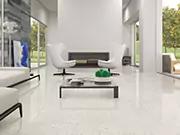
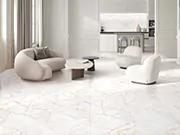
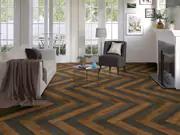
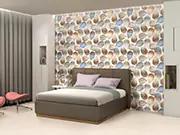
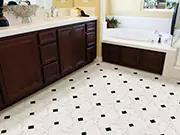
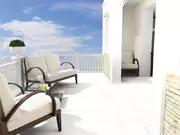
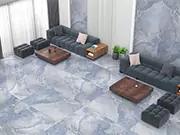
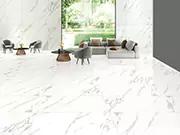
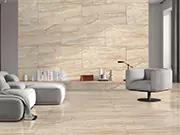

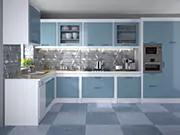




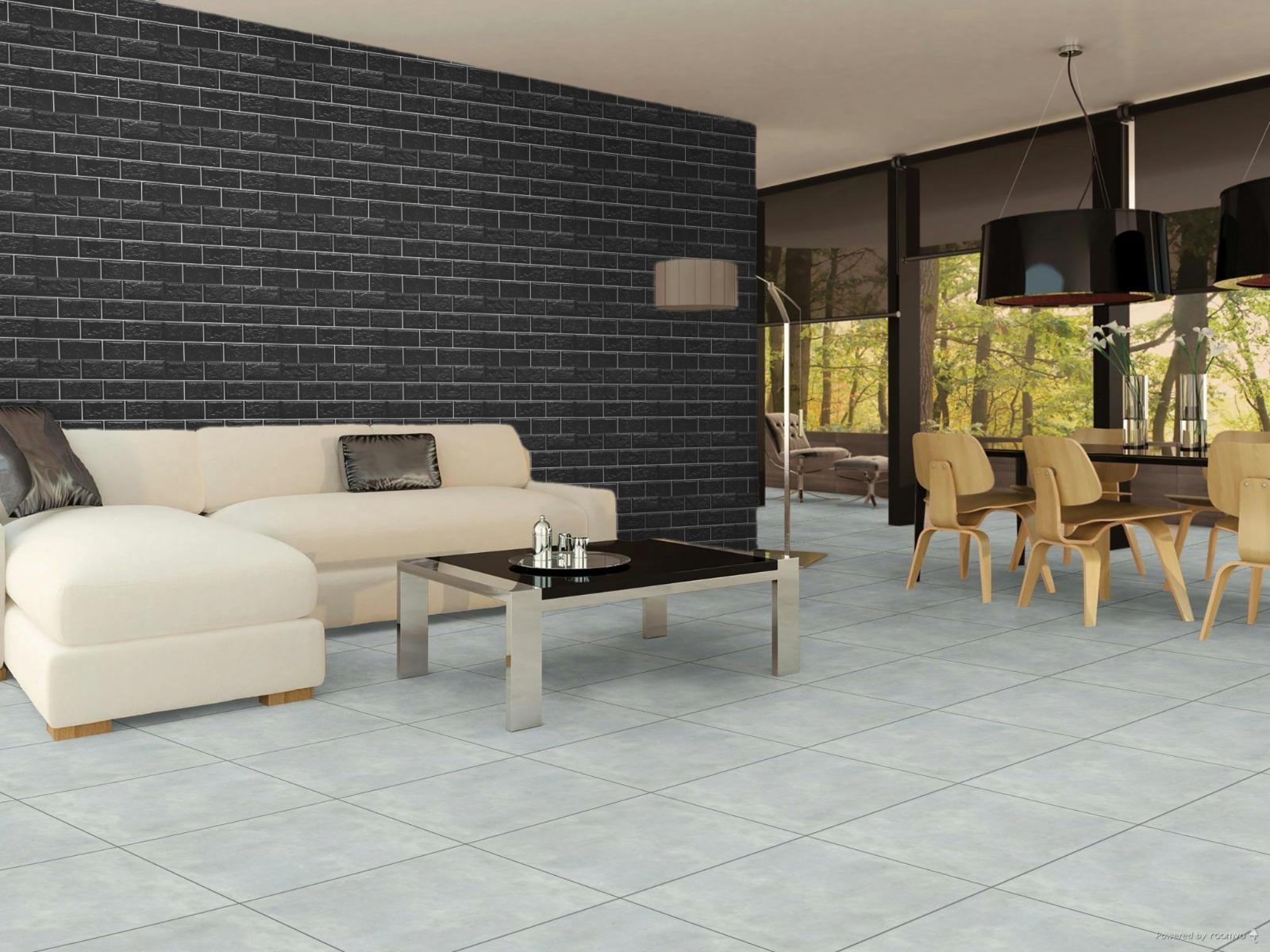



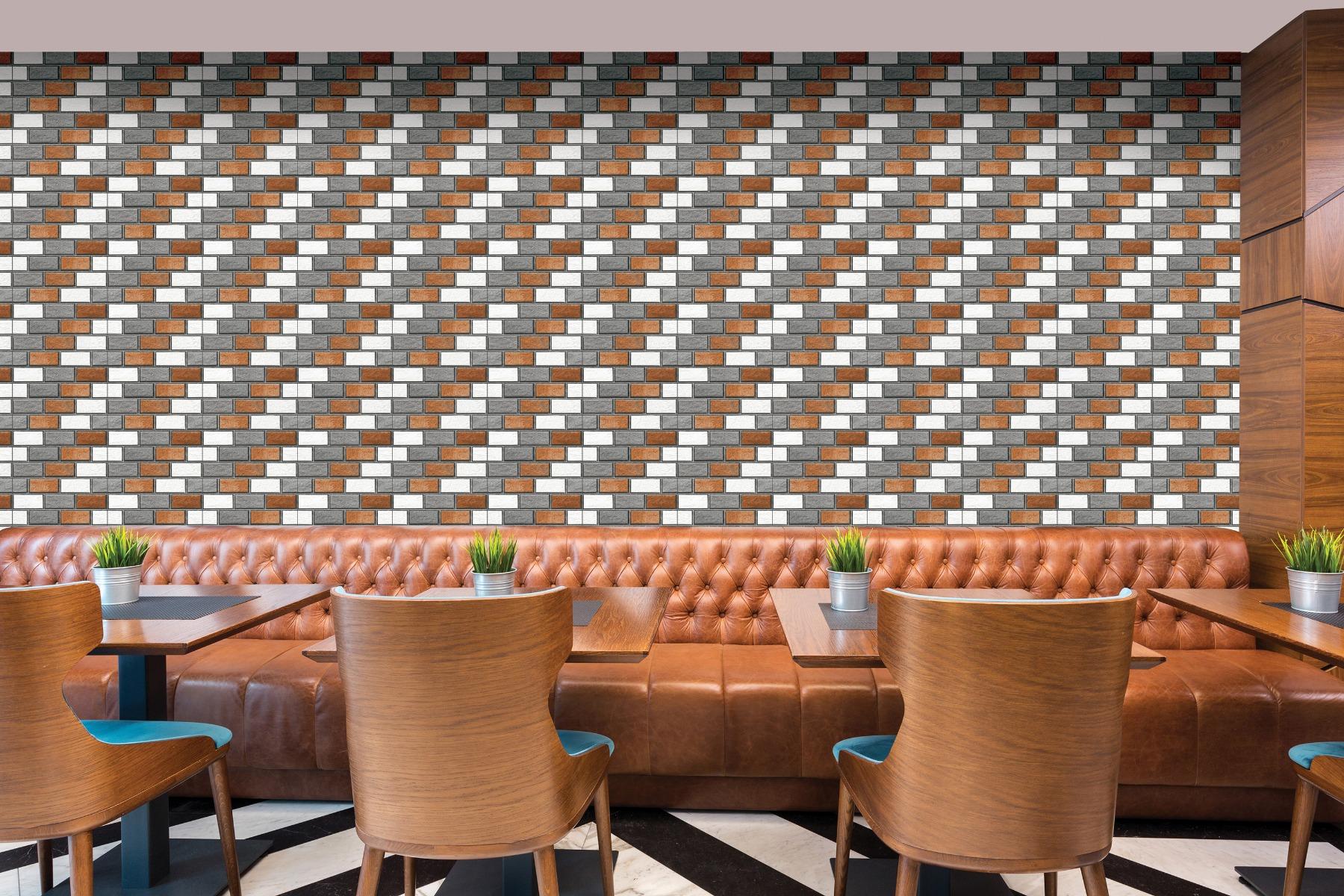

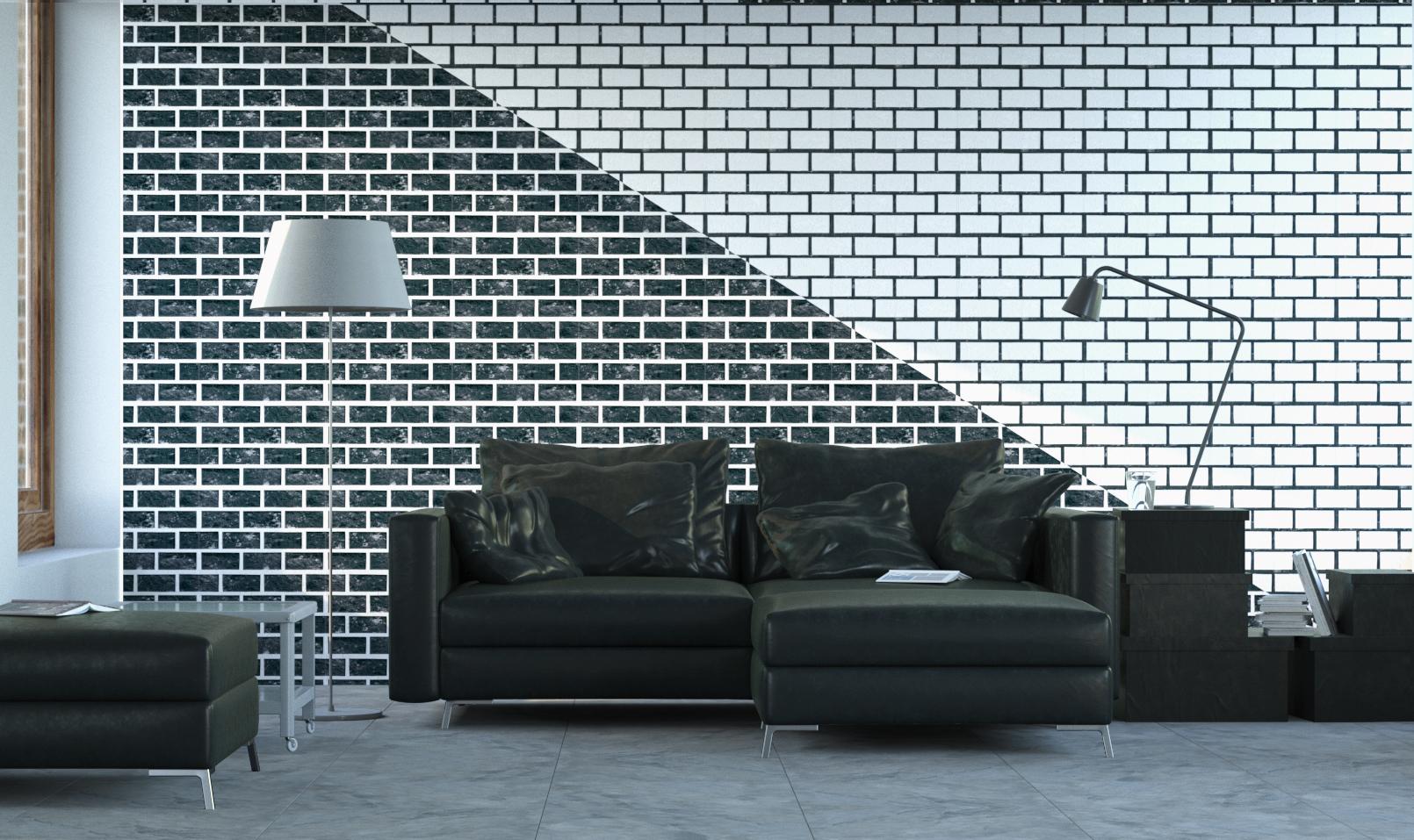
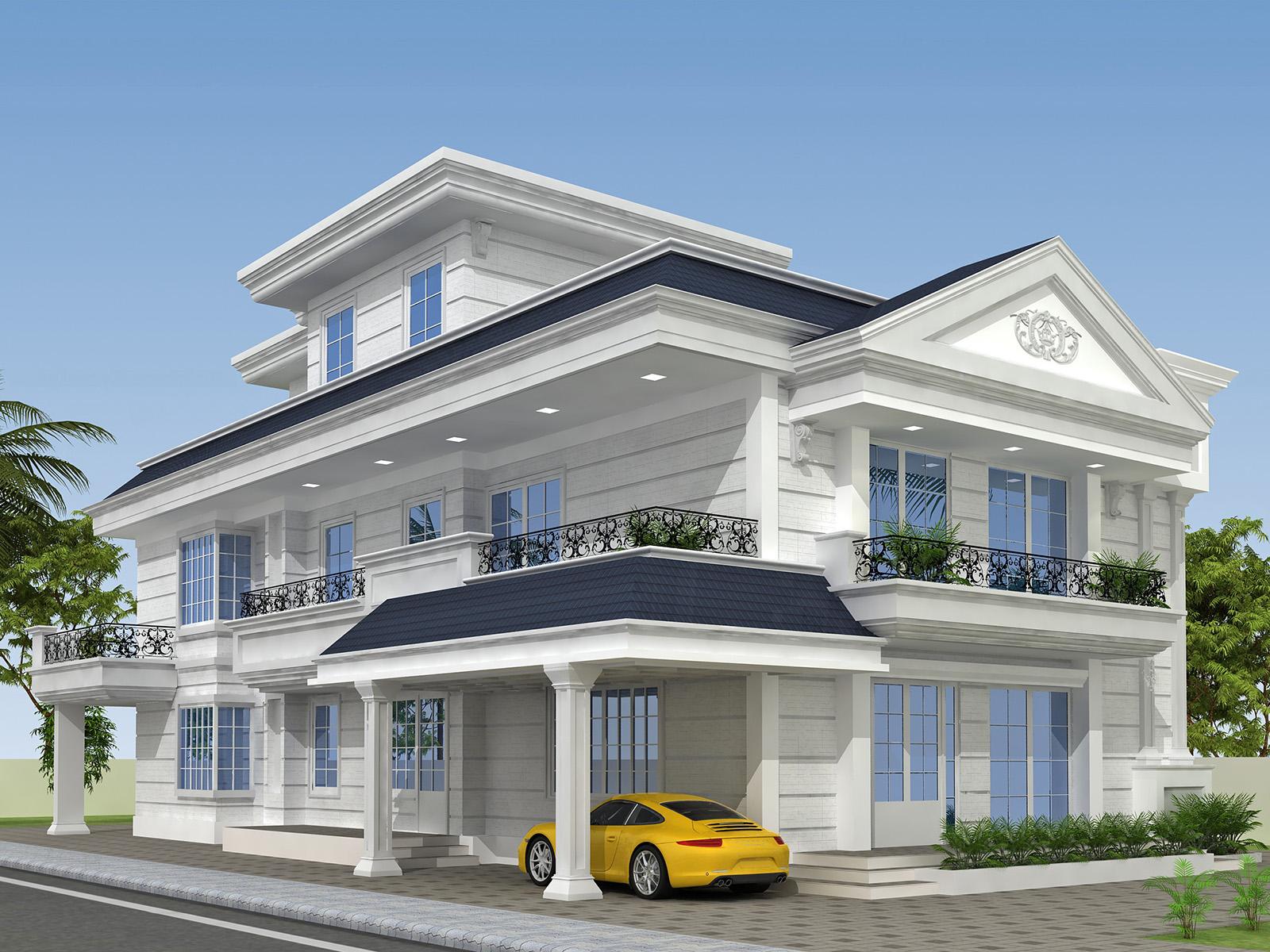







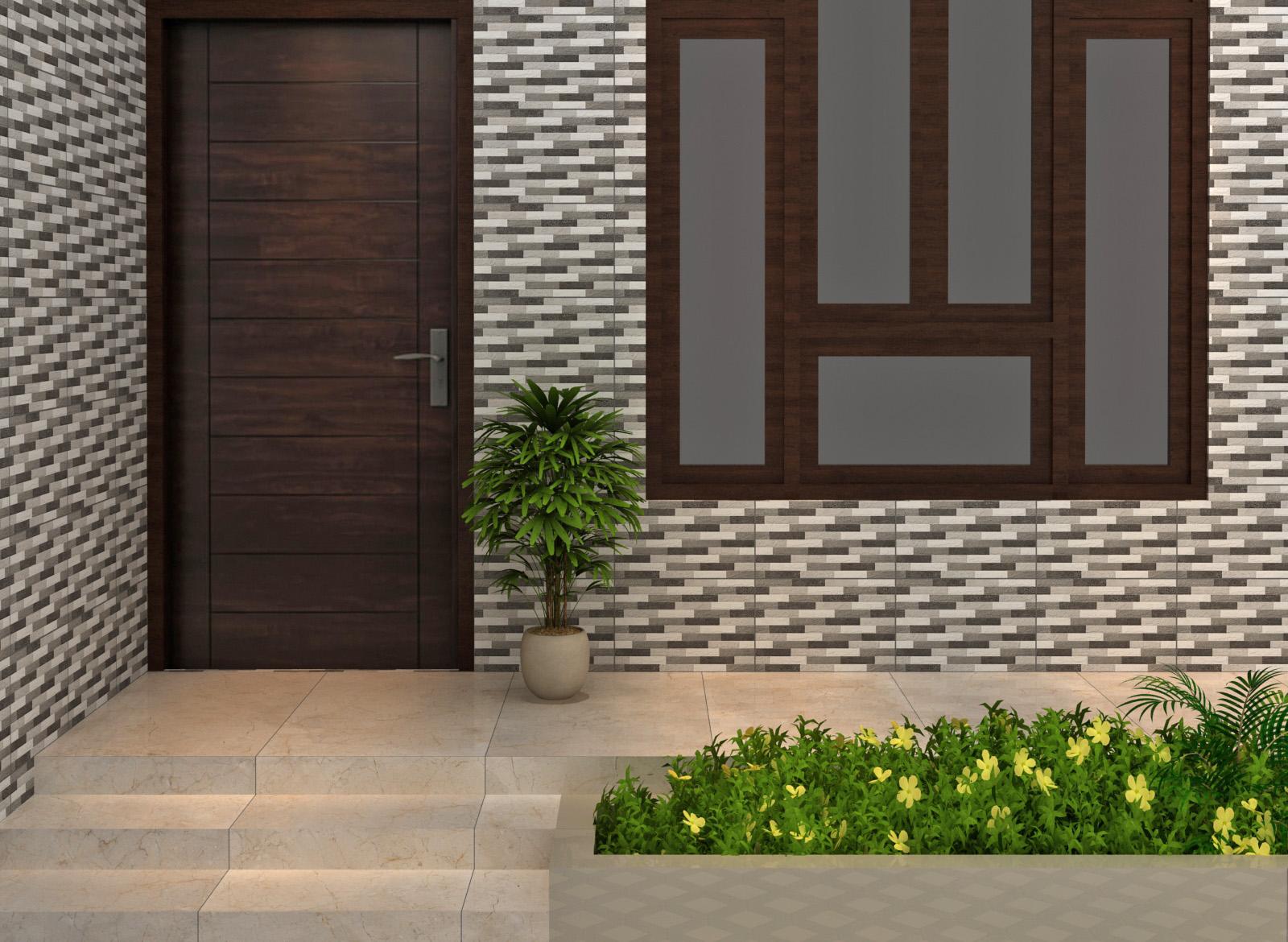

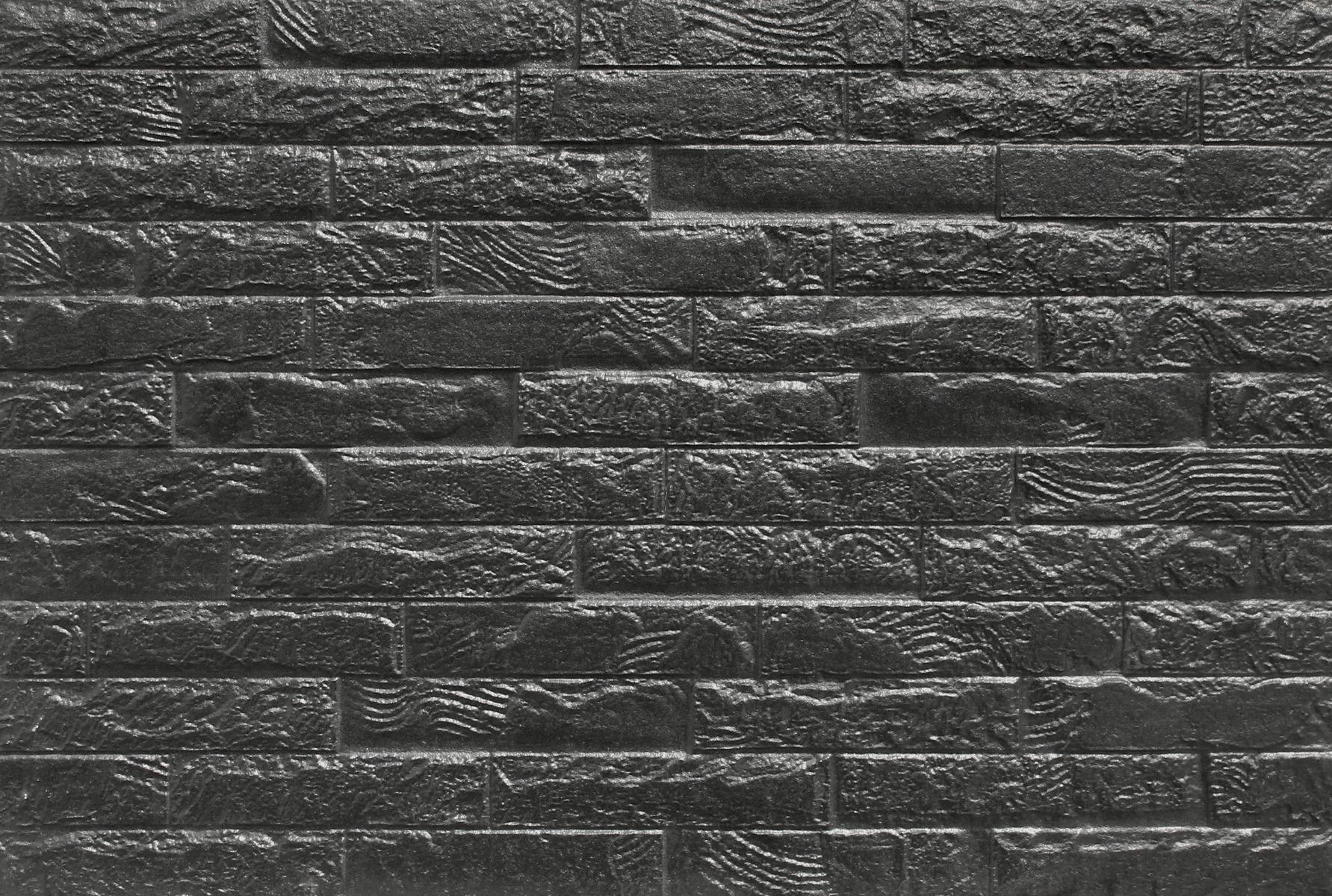
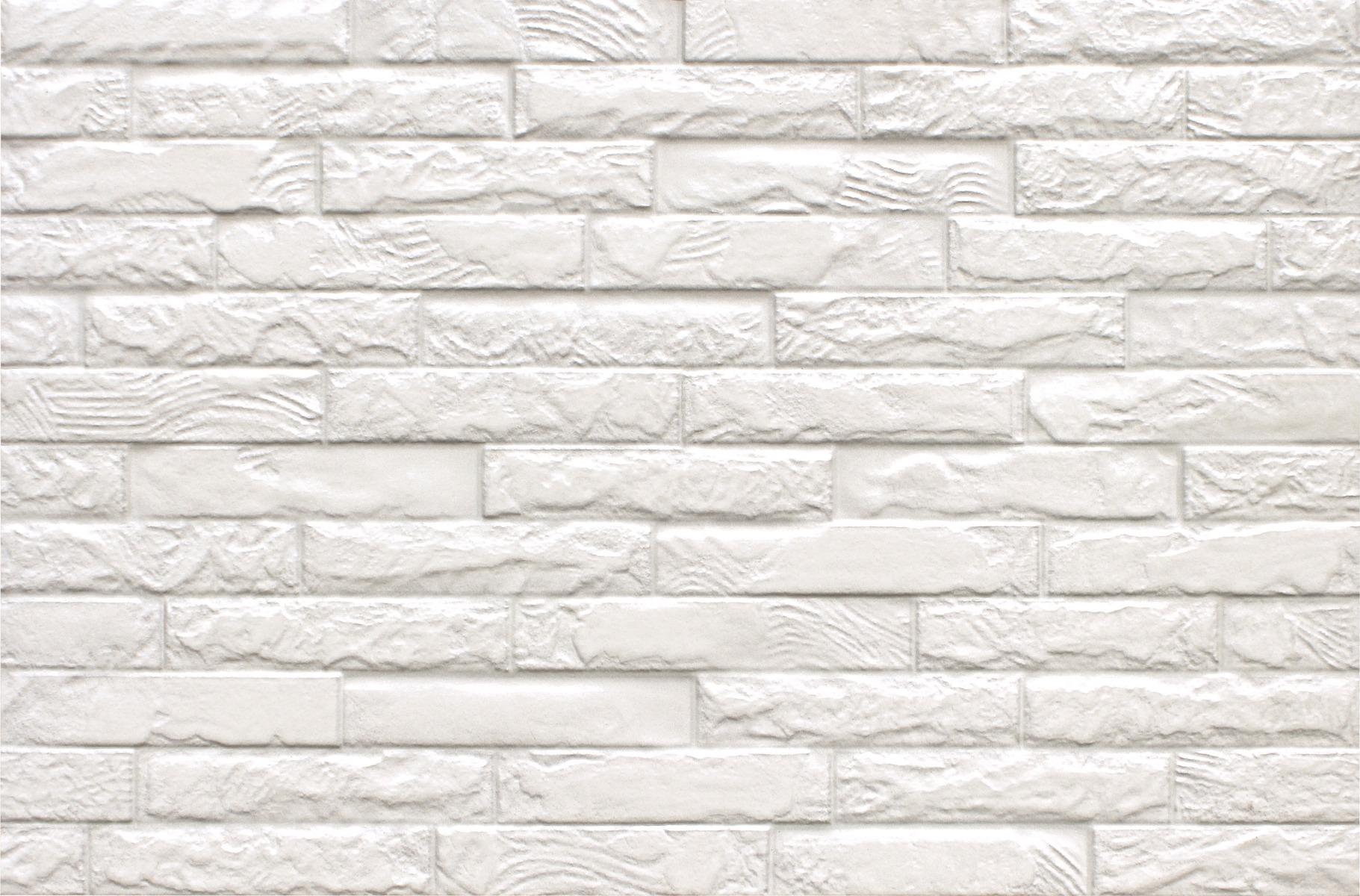


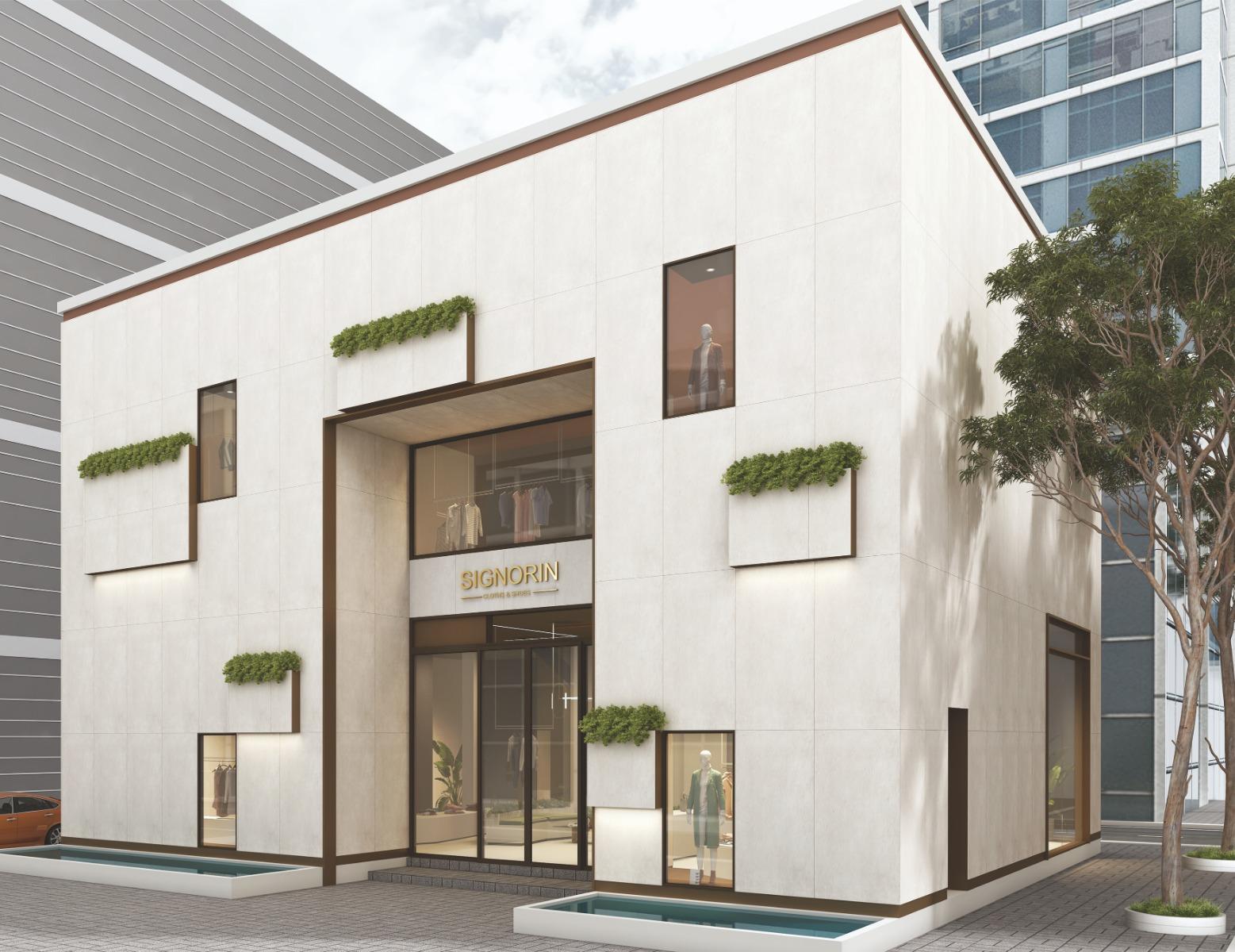

 DOWNLOAD CATALOGUE
DOWNLOAD CATALOGUE